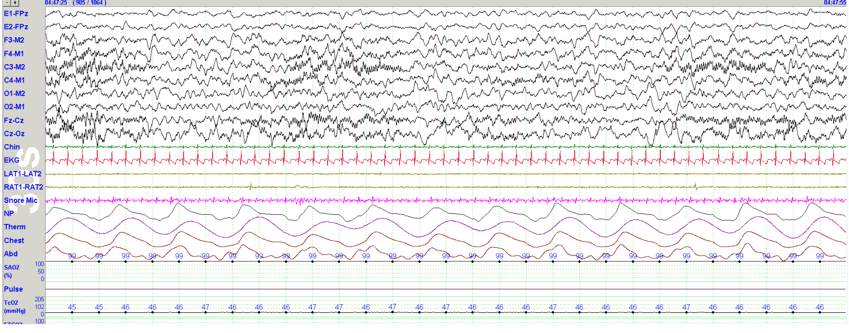Sleep spindles
Sleep spindles represent an oscillating electrical potential in the brain. They have a characteristic frequency of 11–16 Hz (usually 12–14 Hz in healthy adults) and last from one to several seconds in duration[1]. On scalp electroencephalography (EEG), spindles are seen as sinusoidal waves that often have a fusiform or “crescendo-decrescendo” morphology[2]. See Figure 1.

References
1.
a
. The visual scoring of sleep in adults. J Clin Sleep Med. 2007 Mar 15;3(2):121-31.
[PMID: 17557422]
[PMID: 17557422]
2.
a
. Sleep spindles: an overview. Sleep Med Rev. 2003 Oct;7(5):423-40. doi: 10.1053/smrv.2002.0252.
[PMID: 14573378] [DOI: 10.1053/smrv.2002.0252]
[PMID: 14573378] [DOI: 10.1053/smrv.2002.0252]
3.
a
. The AASM Scoring Manual four years later. J Clin Sleep Med. 2012 Jun 15;8(3):323-32. doi: 10.5664/jcsm.1928.
[PMID: 22701392] [PMCID: 3365093] [DOI: 10.5664/jcsm.1928]
[PMID: 22701392] [PMCID: 3365093] [DOI: 10.5664/jcsm.1928]

Discussion